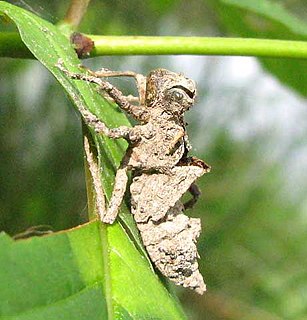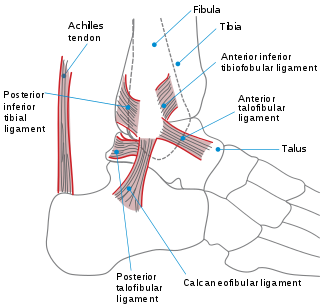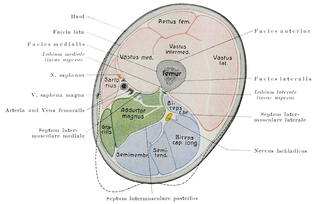
Sitting is a basic human resting position. The body weight is supported primarily by the buttocks in contact with the ground or a horizontal object such as a chair seat. The torso is more or less upright. Sitting for much of the day may pose significant health risks, and people who sit regularly for prolonged periods have higher mortality rates than those who do not.

Haptic technology or kinesthetic communication recreates the sense of touch by applying forces, vibrations, or motions to the user. This mechanical stimulation can be used to assist in the creation of virtual objects in a computer simulation, to control such virtual objects, and to enhance the remote control of machines and devices (telerobotics). Haptic devices may incorporate tactile sensors that measure forces exerted by the user on the interface.

Earmuffs are objects designed to cover a person's ears for hearing protection or for warmth. They consist of a thermoplastic or metal head-band, that fits over the top or back of the head, and a cushion or cup at each end, to cover the external ears. This article focuses on earmuffs that are worn for hearing protection.
Boardshorts are a type of swimwear and casual wear in the form of relatively long loose-fitting shorts that are designed to be quick-drying and are generally made from strong and smooth polyester or nylon material. Originally known as surf trunks, later as Jams, and occasionally in British English as swim shorts, boardshorts are a style of men's and, more recently, women's summerwear.

The Hybrid Assistive Limb is a powered exoskeleton suit developed by Japan's Tsukuba University and the robotics company Cyberdyne. It is designed to support and expand the physical capabilities of its users, particularly people with physical disabilities. There are two primary versions of the system: HAL 3, which only provides leg function, and HAL 5, which is a full-body exoskeleton for the arms, legs, and torso.

An office chair, or desk chair, is a type of chair that is designed for use at a desk in an office. It is usually a swivel chair, with a set of wheels for mobility and adjustable height. Modern office chairs typically use a single, distinctive load bearing leg, which is positioned underneath the chair seat. Near the floor this leg spreads out into several smaller feet, which are often wheeled and called casters. Office chairs were developed around the mid-19th century as more workers spent their shifts sitting at a desk, leading to the adoption of several features not found on other chairs.

A female urination device, female urination aid, or stand-to-pee device (STP) is a device which aids a woman or girl to urinate while standing upright. Variations include basic disposable funnels to more elaborate reusable designs. Female urination devices have increased in popularity since the 1990s. They are used for outdoor pursuits, and for medical reasons.
The long-term complications of standing are the conditions that may arise after prolonged time in a standing or upright position including standing, walking or running. Many of the complications come from prolonged standing that is repeated several times a week. There are many different jobs that require prolonged standing. These included: "retail staff, Baristas, bartenders, assembly line workers, security staff, engineers, catering staff, library assistants, hair stylists and laboratory technicians."

Sarcos is an American developer of robotics and microelectromechanical systems and related technologies. It was founded in the early 1980s when it was spun out from the University of Utah. The company specializes in creating robotic devices for military and public safety applications. Sarcos' work can be found in a wide variety of applications, ranging from the robotic pirates and dinosaurs at theme parks, to the robotic fountains in front of the Bellagio Hotel in Las Vegas, to NASA space suit testing equipment, prosthetic limbs, and MEMS sensors. Time Magazine named Sarcos’ Iron Man-like exoskeleton robot one of “The 50 Best Inventions of 2010”.

Scrubs are the sanitary clothing worn by surgeons, nurses, physicians and other workers involved in patient care in hospitals. Originally designed for use by surgeons and other operating room personnel, who would put them on when sterilizing themselves, or "scrubbing in", before surgery, they are now worn by many hospital personnel. Their use has been extended outside hospitals as well, to work environments where clothing may come into contact with infectious agents. Scrubs are designed to be simple, easy to launder, and cheap to replace if damaged or stained irreparably. In the United Kingdom, scrubs are sometimes known as Theatre Blues.
Kevin Robert Stone, M.D. is a physician, orthopedic surgeon, clinician, researcher, and company founder of The Stone Clinic and the Stone Research Foundation in San Francisco.
ReWalk is a commercial bionic walking assistance system that uses powered leg attachments to enable paraplegics to stand upright, walk and climb stairs. The system is powered by a backpack battery, and is controlled by a simple wrist-mounted remote which detects and enhances the user's movements. Designed in Yokneam, Israel, by Amit Goffer, the ReWalk is marketed by ReWalk Robotics Ltd, and is priced at approximately US$85,000 per unit.

Powered exoskeleton is a wearable mobile machine that is powered by a system of electric motors, pneumatics, levers, hydraulics, or a combination of technologies that allow for limb movement with increased strength and endurance.
The ZEUS Robotic Surgical System (ZRSS) was a medical robot designed to assist in surgery, originally produced by the American robotics company Computer Motion. Its predecessor, AESOP, was cleared by the Food and Drug Administration in 1994 to assist surgeons in minimally invasive surgery. The ZRSS itself was cleared by the FDA seven years later, in 2001. ZEUS had three robotic arms, which were remotely controlled by the surgeon. The first arm, AESOP, was a voice-activated endoscope, allowing the surgeon to see inside the patient’s body. The other two robotic arms mimicked the surgeon’s movements to make precise incisions and extractions. ZEUS was discontinued in 2003, following the merger of Computer Motion with its rival Intuitive Surgical; the merged company instead developed the Da Vinci Surgical System.
Homayoon Kazerooni is a roboticist and professor of mechanical engineering at the University of California, Berkeley.

Ekso Bionics develops and manufactures powered exoskeleton bionic devices that can be strapped on as wearable robots to enhance the strength, mobility, and endurance of soldiers and paraplegics. These robots have a variety of applications in the medical, military, industrial, and consumer markets. It enables individuals with any amount of lower extremity weakness, including those who are paralyzed, to stand up and walk.
Berkeley Robotics and Human Engineering Laboratory is managed and operated by University of California, Berkeley. The lab conducts scientific research on the design and control of a class of robotic systems worn or operated by humans to increase human mechanical strength.
The Vanderbilt exoskeleton, marketed as Indego, is a powered exoskeleton designed by the Center for Intelligent Mechatronics at Vanderbilt University in the U.S. state of Tennessee. It is intended to assist paraplegics, stroke victims and other paralyzed or semi-paralyzed people to walk independently. Motion and control technologies manufacturer Parker Hannifin is funding further development, and plans to release the first commercial version of the exoskeleton in 2015.
Neuromechanics of orthoses refers to how the human body interacts with orthoses. Millions of people in the U.S. suffer from stroke, multiple sclerosis, postpolio, spinal cord injuries, or various other ailments that benefit from the use of orthoses. Insofar as active orthoses and powered exoskeletons are concerned, the technology to build these devices is improving rapidly, but little research has been done on the human side of these human-machine interfaces.
A dual carbon battery is one that uses carbon for both the cathode and the anode.

















